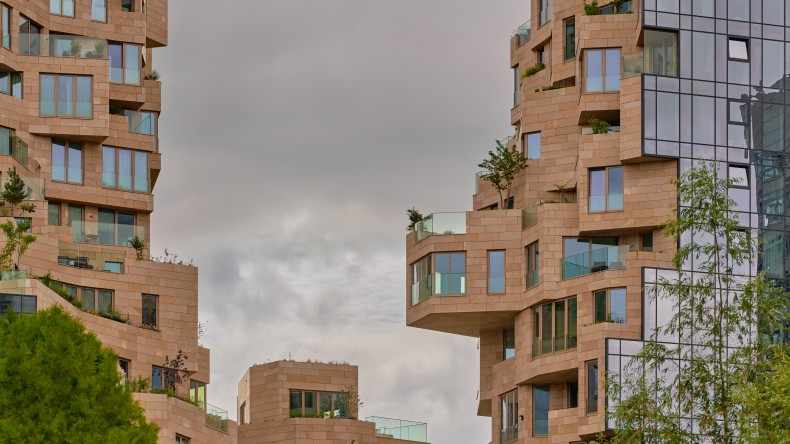Towards to a sustainable construction industry
Geberit solutions in certified buildings
More than a third of global CO2 emissions are due to the construction industry and building maintenance. No wonder there is a call for resource-saving solutions. Geberit sanitary expertise makes a significant contribution to sustainable construction. Three examples.
The construction and operation of buildings cause around 37% of all global CO2 emissions. Sustainable construction is therefore becoming increasingly important. In order to identify a building as sustainable, more and more investors and building owners are relying on external certification. In this process, a building is evaluated on the basis of various criteria (see box). Geberit contributes to a higher sustainability rating for buildings with its sanitary expertise, but also with durable products, recyclable materials and space-saving solutions.
Three examples
These three buildings from the Netherlands, Poland and Hungary were certified according to the international criteria of the sustainability standards BREEAM, LEED and WELL.
The Valley

A tailor-made solution for efficient drainage with reduced water consumption was developed, for example, by the Dutch Geberit team for the building complex "The Valley" in Amsterdam (NL). Architecturally sensational, this building also impresses with its sustainability performance. It received the “BREEAM Excellent“ award from the British standard for sustainable building “BREEAM“.

Varso Place
“Varso Place“ is also more than just another skyscraper in the Polish capital. The building complex with its 300-metre-high tower has given new life to a once run-down street. In addition, “Varso Place“ received several certificates for its socially and ecologically sustainable construction. Geberit piping systems in particular are responsible for the water quality awarded the WELL certificate.
MOL Campus
“MOL Campus“ cannot be overlooked either. With a height of 143 metres, the 28-storey headquarters of the Hungarian oil and natural gas company MOL is considered the tallest office building in Hungary. For its sustainability performance, the building was awarded the “BREEAM Excellent“ rating of the BREEAM standard - and is registered for the highest award of the LEED standard, “LEED Platinum“.
A key criterion for the award was the heating and cooling system, which runs entirely on renewable energy. Greywater and rainwater are purified, stored and reused for flushing toilets and watering the green areas. The entire building is equipped with the Geberit Pluvia roof drainage system.

Sustainable buildings: The most important standards
Certification standards such as LEED, BREEAM or DGNB make the sustainability performance of buildings transparent.
In each case, the building is assessed on the basis of a detailed catalogue of criteria from a certification organisation. The composition and weighting of the criteria differ from label to label. Most of them work with a point system.
- The assessment or certification always refers to the building, not to individual products.
- In addition to environmental issues such as a building's electricity and heat requirements, emissions or resource use, life cycle costs, social aspects (e.g. accessibility), building management, mobility (public transport connections) and the surroundings (green spaces) are also relevant for certification.
Three standards have become established internationally: LEED, BREEAM and DGNB. Depending on the market, important local labels are added, for example Minergie in Switzerland, WELL in Poland and Scandinavia, or NABERS and Green Stars in Australia.
